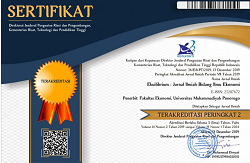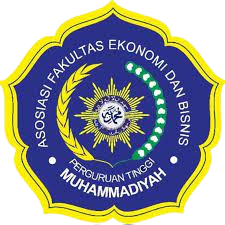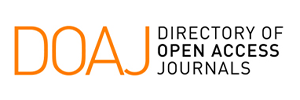Does Gender Inequality Lead to Income Inequality? Evidence from Indonesia
DOI:
https://doi.org/10.24269/ekuilibrium.v17i1.2022.pp1-13Abstract
The study purpose is to analyze the effect of gender inequality in education, health, and labor force participation on income inequality in Indonesia.  Data from 33 provinces in Indonesia during 2011-2018 were analyzed with panel data regression. The results show that gender inequality in education and labor force participation has a negative and significant effect on income inequality. However, gender inequality in life expectancy does not affect income inequality. The implications are the government should provide free education in poor regions such as by providing a larger allocation of scholarship funds and create employment programs to reduce education as well as income inequality, government. In this case,the government can expand community empowerment programs accompanied by intensive and sustainable assistance and private sector should open the widest possible job opportunities without gender discrimination. This research contributes to development economics, particularly regarding the problem of gender inequality and income inequality where it is found that income inequality is influenced by the occurrence of gender inequality both in terms of education and work participation. Previous studies have examined the relationship between gender inequality and economic growth, while this study analyzes the relationship between gender inequality and income inequality based on provincial data in Indonesia. Apart from gender inequality, this study also analyzes two control variables: government capital expenditure and income per capita.Â
References
Afandi, A., Rantung, V. P., & Marashdeh, H. (2017). Determinants of income inequality. Economic Journal of Emerging Markets, 9(2), 159–171. https://doi.org/10.20885/ejem.vol9.iss2.art5
Badriah, L. S., Alisjahbana, A. S., Wibowo, K., & Hadiyanto, F. (2019). Labour Productivity Growth in the Industrial Sector of Indonesia: Structural Bonus or Structural Burden? Malaysian Journal of Economic Studies, 56(1), 139–159. https://doi.org/10.22452/MJES.vol56no1.7
Benjamin, D., Brandt, L., & B McCaig, B. (2017). Growth with equity: income inequality in Vietnam 2002–2014. The Journal of Economic Inequality, 15, 25–46. https://doi.org/10.1007/s10888-016-9341-7.
Branisa, B., Klasen, S., & Ziegler, M. (2013). Gender inequality in social institutions and gendered development outcomes. World Development, 45, 252–268. https://doi.org/10.1016/j.worlddev.2012.12.003
Chakrabarty, D. (2008). Persistent inequality with endogenous rate of time preference. Indian Growth and Development Review, 1(2), 193–21. https://doi.org/10.1108/17538250810903783
Chongvilaivan, A., & Kim, K. (2016). Individual income inequality and its drivers in Indonesia: A Theil decomposition reassessment. Social Indicators Research, 126, 79–98. https://doi.org/doi:10.1007/s11205-015-0890-0
Connolly, M. (2004). Human capital and growth in the Postbellum South: a separate but unequal story. The Journal of Economic History, 64(2), 363–399. https://www.jstor.org/stable/3874778.
Dollar, D., & Gatti, R. (1999). Gender Inequality, Income, and Growth: Are Good Times Good for Women? Working Paper Series No 1. Polecy Research Report on Gender and Development.
Gregorio, J. D., & Lee, J. W. (2002). Education and income inequality: new evidence from cross-country data. Review of Income and Wealth, 48(3), 395–416. https://doi.org/10.1111/1475-4991.00060
Gujarati, N., & Porter, D. C. (2012). Basic Econometrics (5th ed.). McGraw-Hill Education.
Khusaini, Remi, S. S., Fahmi, M., & Rd. M. Purnagunawan. (2020). Measuring the Inequality in Education: Educational Kuznets Curve. Jurnal Ekonomi Malaysia, 54(3), 59–76. http://dx.doi.org/10.17576/JEM-2020-5403-5
Klasen, S. (2002). Low schooling for girls, slower growth for all?Cross-country evidence on the effect of gender inequality in education on economic development. The World Bank Economic Review, 16(3), 345–373. https://doi.org/10.1093/wber/lhf004
Klasen, S., & Lamanna, F. (2009). The Impact of gender inequality in education and employment on economic growth: New Evidence for a panel of countries. Feminist Economist, 15(3), 91–132. https://doi.org/10.1080/13545700902893106
Kleven, H., & Landais, C. (2017). Gender inequality and economic development: Fertility, education, and norms. Economica, 84(334), 180–209. https://doi.org/10.1111/ecca.12230.
Kuznets, S. (1955). Economic growth and income inequality. The American Economic Review, 45(1), 1–28.
Lagerlöf, N. P. (2003). Gender equality and long-run growth. Journal of Economic Growth, 8(4), 403–426. http://www.jstor.org/stable/40215889
Lee, J.-W., & Lee, H. (2018). Human capital and income inequality. Journal of the Asia Pacific Economy, 23(4), 554–583. https://doi.org/10.1080/13547860.2018.1515002
Leigh, A., & Eng, P. V. . (2009). Inequality in Indonesia: What can we learn from top incomes? Journal of Public Economics, 93, 209–212. https://doi.org/10.1016/j.jpubeco.2008.09.005
Lin. (2007). Education expansion, educational inequality, and income inequality: evidence from Taiwan, 1976-2003. Social Indicators Research, 80(3), 601–615. https://doi.org/10.1007/s11205-006-0009-8
Mankiw, N. G. (2007). Macroeconomics (6th ed.). Worth Publisher.
Matthew, O., Adeniji, A., & Osabohien, R. (2020). Gender inequality, maternal mortality, and inclusive growth in Nigeria. Soc Indic Res, 147, 763–780. https://doi.org/10.1007/s11205-019-02185-x
Munir, K., & Kanwal, A. (2020). Impact of educational and gender inequality on income and income inequality in South Asian countries. International Journal of Social Economics, 47(8), 1043–1062. https://doi.org/10.1108/IJSE-04-2020-0226
Myrdal, G. (1957). Economic Theory and Underdeveloped Regions. Gerald Duckworth.
Nugraha, K., & Lewis, P. (2013). Towards a better measure of income inequality in Indonesia. Bulletin of Indonesian Economic Studies, 49(1), 103–112. https://doi.org/:10.1080/00074918.2013.772941
O’Neill, D. (1995). Education and income growth: implications for cross-country inequality. Journal of Political Economy, 103(6), 1289–1301.
Read, J. G., & Gorman, B. K. (2010). Gender and health inequality. Annual Review of Sociology, 36(1), 371–386. https://doi.org/10.1146/annurev.soc.012809.102535
Rokhmansyah, A. (2016). Pengantar Gender dan Feminimisme. Penerbit Garudhawaca.
Seguino, S. (2008). Micro-macro linkages between gender, development, and growth: Implications for the Caribbean region. Journal of Eastern Caribbean Studies, 33(4), 8–42.
Sitorus, A. V. Y. (2016). The impact of gender inequality on economic growth in Indonesia. Sosio Informa, 2(1), 89–101.
Statistics, C. B. of. (2019). Indonesian Statistics. Central Bureau of Statistics.
Suryahadi, A., Hadiwidjaja, G., & Sumarto, S. (2012). Economic Growth and Poverty Reduction in Indonesia Before and After the Asian Financial Crisis (S. Girschik (ed.)). The SMERU Research Institute.
The Ministry of Women’s Empowerment and Child Protection. (2019). Gender-Based Human Development 2019. The Ministry of Women’s Empowerment and Child Protection. https://www.kemenpppa.go.id/lib/uploads/list/44ac0-pembangunan-manusia-berbasis-gender-2019.pdf
Todaro, M. P., & Smith, S. C. (2012). Economic Development (11th ed.). Pearson Education Limited.
Vo, D. H., Nguyen, T. C., Tran, N. P., & Vo, A. T. (2019). What factors affect income inequality and economic growth in middle-income countries? Journal of Risk Financial Management, 12(40), 1–12. https://doi.org/10.3390/jrfm12010040
World Bank. (2012). World Development Report 2012: Gender Equality and Gender and Development. http://documents1.worldbank.org
Yumusak, I. G., Bilen, M., & Ates, H. (2013). The Impacts of gender inequality in education on economic growth in Turkey. Procedia - Social and Behavioral Sciences, 103, 1093–1103. https://doi.org/10.1016/j.sbspro.2013.10.437.
Downloads
Published
How to Cite
Issue
Section
License
Retained Rights/Terms and Conditions of Publication
1. As an author you (or your employer or institution) may do the following:
- make copies (print or electronic) of the article for your own personal use, including for your own classroom teaching use;
- make copies and distribute such copies (including through e-mail) of the article to research colleagues, for the personal use by such colleagues (but not commercially or systematically, e.g. via an e-mail list or list server);
- present the article at a meeting or conference and to distribute copies of the article to the delegates attending such meeting;
- for your employer, if the article is a ‘work for hire’, made within the scope of your employment, your employer may use all or part of the information in the article for other intra-company use (e.g. training);
- retain patent and trademark rights and rights to any process, procedure, or article of manufacture described in the article;
- include the article in full or in part in a thesis or dissertation (provided that this is not to be published commercially);
- use the article or any part thereof in a printed compilation of your works, such as collected writings or lecture notes (subsequent to publication of the article in the journal); and prepare other derivative works, to extend the article into book-length form, or to otherwise re-use portions or excerpts in other works, with full acknowledgement of its original publication in the journal;
- may reproduce or authorize others to reproduce the article, material extracted from the article, or derivative works for the author's personal use or for company use, provided that the source and the copyright notice are indicated, the copies are not used in any way that implies RCEPM-LIPI endorsement of a product or service of any employer, and the copies themselves are not offered for sale.
All copies, print or electronic, or other use of the paper or article must include the appropriate bibliographic citation for the article's publication in the journal.
2. Requests from third parties
Although authors are permitted to re-use all or portions of the article in other works, this does not include granting third-party requests for reprinting, republishing, or other types of re-use. Requests for all uses not included above, including the authorization of third parties to reproduce or otherwise use all or part of the article.
3. Author Online Use
- Personal Servers. Authors and/or their employers shall have the right to post the accepted version of articles pre-print version of the article, or revised personal version of the final text of the article (to reflect changes made in the peer review and editing process) on their own personal servers or the servers of their institutions or employers without permission from Universitas Muhamamdiyah Ponorogo, provided that the posted version includes a prominently displayed Universitas Muhamamdiyah Ponorogo copyright notice and, when published, a full citation to the original publication, including a link to the article abstract in the journal homepage. Authors shall not post the final, published versions of their papers;
- Classroom or Internal Training Use. An author is expressly permitted to post any portion of the accepted version of his/her own articles on the author's personal web site or the servers of the author's institution or company in connection with the author's teaching, training, or work responsibilities, provided that the appropriate copyright, credit, and reuse notices appear prominently with the posted material. Examples of permitted uses are lecture materials, course packs, e-reserves, conference presentations, or in-house training courses;
- Electronic Preprints. Before submitting an article to an Ekuilibrium: Jurnal Ilmiah Bidang Ilmu Ekonomi, authors frequently post their manuscripts to their own web site, their employer's site, or to another server that invites constructive comment from colleagues. Upon submission of an article to Ekuilibrium: Jurnal Ilmiah Bidang Ilmu Ekonomi, an author is required to transfer copyright in the article to Economy Faculty Universitas Muhammadiyah Ponorogo, and the author must update any previously posted version of the article with a prominently displayed Economy Faculty Universitas Muhammadiyah Ponorogo copyright notice. Upon publication of an article by the Universitas Muhammadiyah Ponorogo, the author must replace any previously posted electronic versions of the article with either (1) the full citation to the work with a Digital Object Identifier (DOI) or link to the article abstract in Ekuilibrium: Jurnal Ilmiah Bidang Ilmu Ekonomi journal homepage, or (2) the accepted version only (not the final, published version), including the Economy Faculty Universitas Muhammadiyah Ponorogo copyright notice and full citation, with a link to the final, published article in journal homepage.
4. Articles in Press (AiP) service
Economy Faculty Universitas Muhammadiyah Ponorogo may choose to publish an abstract or portions of the paper before we publish it in the journal. Please contact our Production department immediately if you do not want us to make any such prior publication for any reason, including disclosure of a patentable invention.
5. Author/Employer Rights
If you are employed and prepared the article on a subject within the scope of your employment, the copyright in the article belongs to your employer as a work-for-hire. In that case, Economy Faculty Universitas Muhammadiyah Ponorogo assumes that when you sign this Form, you are authorized to do so by your employer and that your employer has consented to the transfer of copyright, to the representation and warranty of publication rights, and to all other terms and conditions of this Form. If such authorization and consent has not been given to you, an authorized representative of your employer should sign this Form as the Author.
6. RCEPM-LIPI Copyright Ownership
It is the formal policy of Economy Faculty Universitas Muhammadiyah Ponorogo to own the copyrights to all copyrightable material in its technical publications and to the individual contributions contained therein, in order to protect the interests of the Economy Faculty Universitas Muhammadiyah Ponorogo, its authors and their employers, and, at the same time, to facilitate the appropriate re-use of this material by others. Economy Faculty Universitas Muhammadiyah Ponorogo distributes its technical publications throughout the world and does so by various means such as hard copy, microfiche, microfilm, and electronic media. It also abstracts and may translate its publications, and articles contained therein, for inclusion in various compendiums, collective works, databases and similar publication.
7. Licensing Terms
Ekuilibrium is licensed under a Creative Commons Attribution-ShareAlike 4.0 International License.
Permissions beyond the scope of this license may be available at https://journal.umpo.ac.id/













